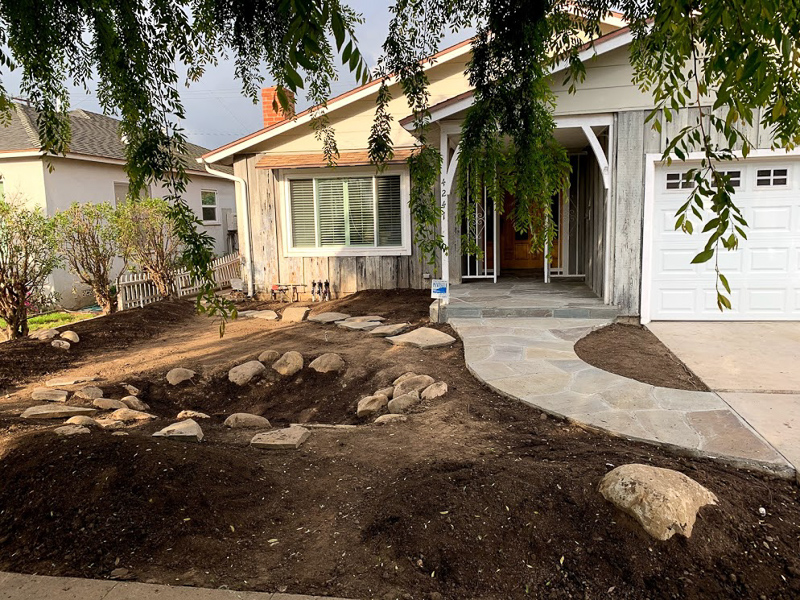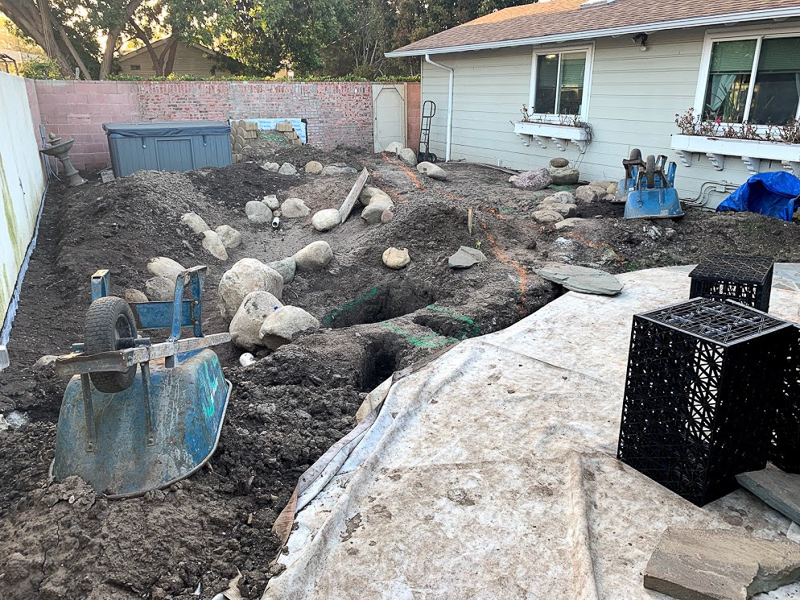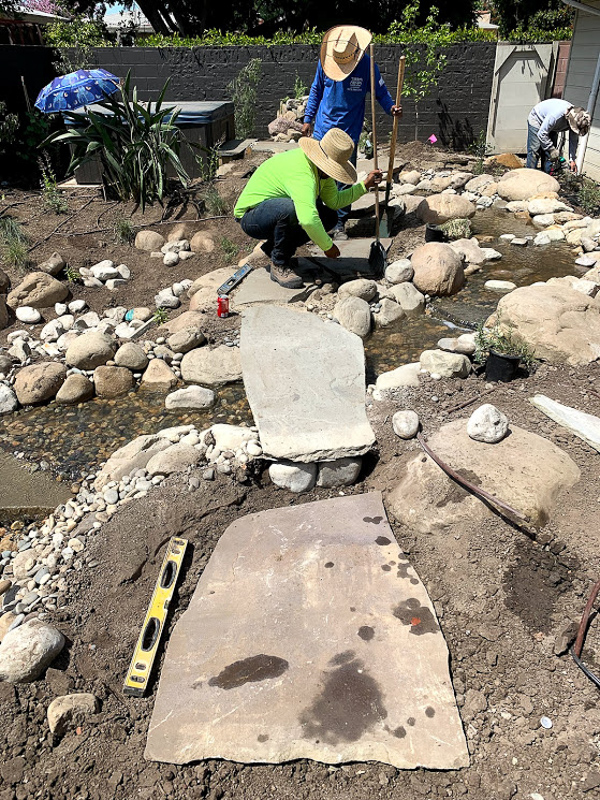After deciding to redo our landscaping and coming up with a design, in early December 2018 the crew from Stout Design Build arrived to start work on our new landscaping. Demo work went fairly quickly – where I had labored for weeks with a mallet and chisel, the team smashed through concrete in hours using a jackhammer. A turf cutter made quick work of our grass, leaving bare dirt where once we’d used inordinate amounts of water keeping the grass alive. Removal of the ficus tree in the back proved more difficult, but after a few days of sadly watching our tree disappear, where once there were branches only sky remained. From that point things began to slow as California experienced one of its rainiest winters in years. We obviously celebrated the dramatic ending to the state’s long drought, but after watching the team struggling valiantly to work in the mud, we understood fully when they told us they’d be staying home on days where the yard was waterlogged. As a result, the initial 4-6 week project timeline quickly turned into a much longer effort.
Following the completion of demolition, and when it was dry enough to work, the team continued with the next phase: installing the hardscape. Being the engineering geek that I am, it was super-exciting when a cement truck pulled up to the house and concrete started flowing into forms that outlined the walkways, new patio, and other elements that had previously existed only in design drawings. For the guys doing the work it was a frenzied scene, with several people struggling to hold the lengthy concrete-dispensing hose and others then rushing in to smooth out the newly-poured mixture. Unfortunately the frenzied pace ended up leading to later issues, as the next rain showed water pooling on the patio area where it was supposed to drain, and to fix it Tom had to sentence the guys to two days of hard labor with a grinder in order to get things back to proper levels.
The next phase of the project was flagstone installation, and after touring the stone yard and picking out pallets that we liked another giant truck, complete with its own forklift, arrived and left several tons of Pennsylvania bluestone in the front yard. There was a bit of drama to this part of the project, but eventually a mason arrived who put our new patio together in two days and patched up some issues in the front walkway, and for the first time we had a finished piece of the yard to give us a taste of what the final project was actually going to look like.
Work continued with all of the other elements in our design: a dump truck arrived and caused thunder to reverberate across the Westside when it dropped a load of boulders into the front yard (after watching the guys then heave each of these boulders to the back yard, I am forever grateful that I’m not a landscaper). Channels were cut into the concrete driveway to capture rainwater, and a french drain was installed to convey that water to the swale. Gutters were reconfigured, walls along the property line were shored up, truck loads of dirt were brought in, and a vast number of other tasks were completed to get the yard ready for planting. One of the last major tasks on the list was installation of the back yard stream, and this one proved a significant hurdle until a team with years of experience in building water features was enlisted to finish the job. After several days of moving boulders, setting up the liner, installing plumbing, and creating various drops and other features along the channel, a stream that is somehow indistinguishable from a natural waterway started flowing through our yard, and we now awake each day to the sound of Holliday Creek gurgling across the property.
By the time the stream was done it was April, and the project had been ongoing for nearly five months, but we were finally ready to start putting plants in the ground. The last entry in this series will cover the creation of Audrey’s front yard “alien” garden, and the back yard featuring California natives plants, Scofield Vineyards, and the Skip & Sally Holliday Willow Grove.


